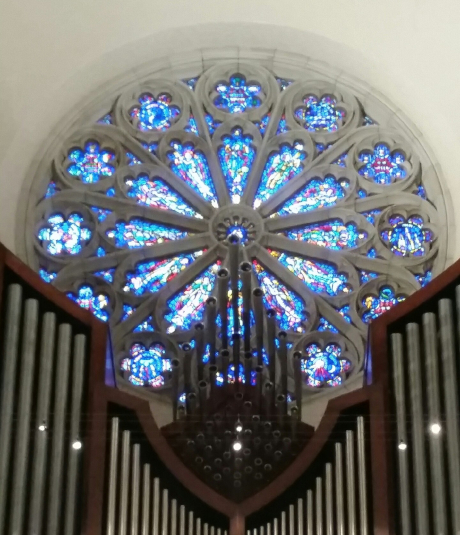A major renovation at the Cathedral Church of St. Luke in Orlando unveiled a new light on the sanctuary on the holiest of days—Easter Sunday. The April morning sun painted a soft kaleidoscope of red and blue brilliance on the white columns after the stained-glass windows were recently cleaned and refurbished.
“We felt like it was our job to preserve the power of these windows, to let the light of Christ in so that we could go and live his life into the world,” said The Very Rev. Dr. Reggie Kidd.
During the service, Kidd held up a piece of milky white plastic trimmed to the shape of a large quatrefoil. Cut from coverings just removed from the stained-glass windows, it resembled the hazed headlights of an old car. Even in its darkened state, the stained glass added so much to the worship environment that the magnificent east-facing rose window has become a symbol of the Cathedral and the centerpiece of the church’s logo.
“The windows were all in pretty good shape,” said Anne Michaels, Cathedral historian and treasurer. “There wasn’t any major deterioration or damage. There were some minor cracks and leading that needed to be replaced. The main thing they’re doing is replacing the external coverings. The previous ones were very, very cloudy. They’d been there since the late 1980s. It’s really stunning what a difference it makes.”
The two oldest windows in the cathedral date back to the late 1800s when the church was a wooden building on the current site. The St. Luke window located in the narthex was presented in memory of Thomas Jefferson’s grandson, Francis Eppes. His home is where members of Church of St. Luke first convened for a Bible study 150 years ago.
The Rev. Canon Josh M. Bales and The Rev. Canon Dr. Justin S. Holcomb asperged the windows with holy water, and the congregation sang a composition by Canon Ben Lane and Michael Petrosh written to commemorate the occasion, “Lux illuminare: Light to enlighten.”
The window cleaning and refurbishment represents the first need met from a list of improvements that will be addressed by a $1.5-million capital campaign. The restoration was done by Willet Hauser Architectural Glass, the same company which designed and installed most of the windows starting in 1947 and added others over time.
“The glass is here to do what Abbot Suger had inscribed over the door of St. Denis outside of Paris, ‘To brighten the minds, so that they may travel through the lights to the true light where Christ is the true door,’” said Kidd.
PHOTO: Kate Maier

